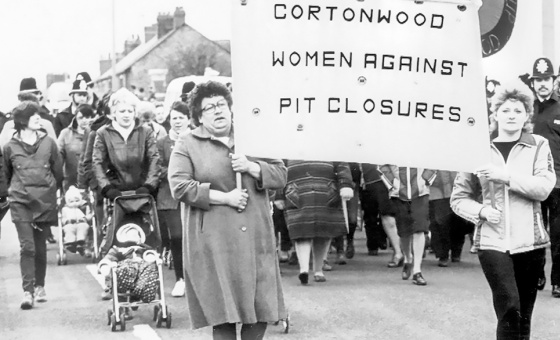This is the last article you can read this month
You can read more article this month
You can read more articles this month
Sorry your limit is up for this month
Reset on:
Please help support the Morning Star by subscribing here
THE British Museum opened a new wing last year which cost £135 million to build and was designed by New Labour’s favourite “starchitect,” Sir Richard Rogers.
The museum was thrilled to announce a purpose-built exhibition area providing the public with a new way of looking at its treasures.
But as the debate as to whether our museums should be allowed to charge an entrance fee raises its head again — the new wing is used for ticket-only events — the British Museum faces a tricky question as to what it now does with one of the greatest assets it possesses.
It is not an artefact pillaged by a Victorian grave-robber, but Sir Sydney Smirke’s astonishing round reading room, found in the very centre of the museum.
Built in 1852 and based on Rome’s Pantheon, it gave Karl Marx a desk, its shelves were browsed by Lenin, and was the place for Victorian novelists such as Bram Stoker and Conan Doyle to be seen slaving over their manuscripts, and later other writers such as the Bloomsbury set.
To construct what was originally the main reading room for the British Library, Smirke used cast iron and concrete — ground-breaking construction techniques for the time.
Its spectacular interior boasts huge windows that flood leather-topped desks with natural light. Shelves packed with tomes curve gently round the walls and history seeps from every nook and cranny.
We can also assume it is in fairly good nick. It was spruced up by a three-year renovation programme after the library’s 1997 move to new headquarters in nearby Euston Road, its original decorative scheme reinstated and post-war additions removed. Desks were discreetly updated so computers can be used.
From 2007 until last year the museum used it as a temporary place to host ticket-only blockbuster exhibitions, including acclaimed shows as The First Emperor: China’s Terracotta Army and Life and Death in Pompeii.
But while its glorious history as a “temple to the deification of bibliography,” as one Victorian scholar described it, is celebrated, its future is not so certain.
The museum had temporary planning permission to shroud its beautiful features in scaffolding and planks during the construction of the new wing so it could host shows that cost more than a tenner to go and see.
It boosted income while wriggling round the free-entry rule. They said it was a temporary solution while the new wing was completed — but it seems the museum has no idea what happens next.
This is particularly important today, as new calls for museums to charge come at a time when access to public study spaces is under attack.
The idea that the state should fund libraries is increasingly being whittled away in this neoconservative age. Everything must have an immediately obvious economic cost and public services are seen as luxuries, not the corner stone of a civilised society.
Your correspondent has been asking the museum for five long years what the future holds for the room.
I have requested interviews with the directors in charge of its future — but been stonewalled. Instead, after regular badgering, press officers finally answered written questions.
Their answers were far from enlightening.
“The reading room is currently closed while the museum undertakes a programme of work to remove temporary exhibition staging,” they said — a case of stating the bleedin’ obvious.
What happens after this, nobody wants to discuss in any detail. The museum says a new director is to be appointed in 2016 after the current incumbent Neil MacGregor steps down, and then its fate will be considered.
“There are no specific ideas on the table,” the spokesman added. “It is a case of keeping an open mind and considering all options.”
This case of kicking the can down the road is concerning.
Surely MacGregor, widely praised for his stewardship of a collection that, to many, carries the distasteful whiff of Britain’s imperial past, should have a vision for this extraordinary room at the very heart of the institute?
It can only further heighten fears that spaces which can be used for coffer-boosting ticketed exhibitions are just too valuable to hand back to the public.
Surely with Bloomsbury’s massive student population facing further pressures on study space, and the neighbourhood’s schoolchildren — many living in crowded conditions where homework is a logistical issue — the room should be returned to its original role forthwith?
Support is out there. Museum trustee and Nobel prize-winner Sir Paul Nurse told me that opening up Smirke’s masterpiece once more would be a advantageous.
“I can’t second guess what will happen — but I’d like to see its integrity returned,” he said.
“I’d like to see the fact it was this great library and intellectual centre for London celebrated. It means making its structure obvious and some connection maintained to its intellectual history. It is a space that spawned ideas.”
Others are more forthright. Architectural historian Dan Cruickshank queries why a plan has not been long in place.
“It is an extremely important interior and the museum must find an acceptable use for it soon,” he told me. There were promises it would be restored and reopened and they have not done that. So much has happened there of truly international importance. “It is a marvellous place to work — it is so conducive to intellectual achievement.”
Architect Spencer de Grey, senior partner and head of design at Rogers’s practice, worked on the redesign of the museum’s great court between 1994 and 2000.
He says the room’s future must be at the top of the to-do list for MacGregor’s replacement.
“London is short of civilised, free places of study,” he said. “Surely the round reading room could immediately reopen as such. It is an uplifting space that inspired the likes of Karl Marx and should be available to the students and researchers of today.”
The museum holds in its trust treasures lifted from civilisations from around the globe.
Now it must show, as a matter of urgency, how it intends to care for one of its own.








